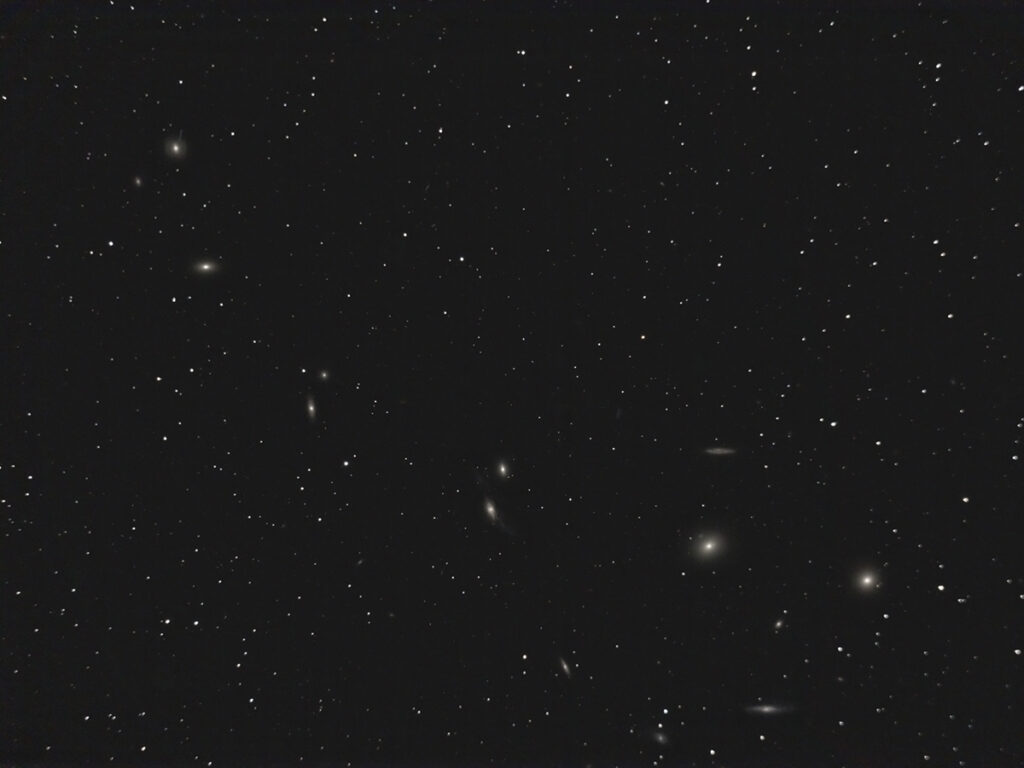
Telescope: Meade SN10 at f/4, Orion Atlas EQ-G
Camera: Full Spectrum Modified Nikon D810
Filter: GSO IR Blocking Filter
Guide scope: Williams Optics 50mm, ASI290MM mini, PHD
Exposure: 109x20sec, ISO 200, saved as RAW
Darks: None (dithered every 4 images)
Flats: 32×1/50sec, tee shirt flats taken at dusk
Average Light Pollution: Red zone, poor transparency
Lensed Sky Quality Meter: 18.3 mag/arc-sec^2
Stacking: Mean with a 1-sigma clip.
White Balance: Nebulosity Automatic
Software: Backyard Nikon, Nebulosity, Deep Sky Stacker, Photoshop
Markarian’s Chain is a remarkable arc of galaxies within the Virgo Galaxy Cluster. The elliptical galaxies M84 and M86 are the most prominent members at the lower right with the other members of the Chain sweeping along an arc to the upper left ending with the spiral galaxy NGC 4477. If you look closely at NGC 4477 you can see a nearly vertical line. This is the track of (1816) Liberia, a tiny asteroid that was 89 million miles away out in the asteroid belt and shining at Mv 13 when this image was taken.
The Virgo Galaxy Cluster is currently well placed high overhead as twilight deepens.
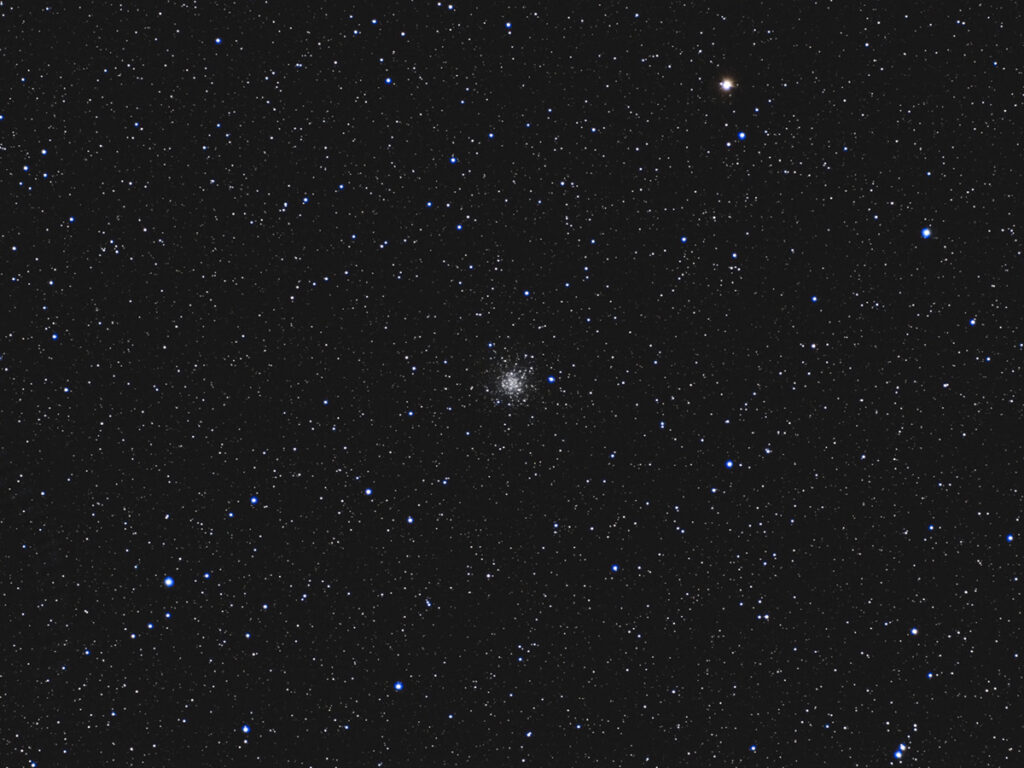
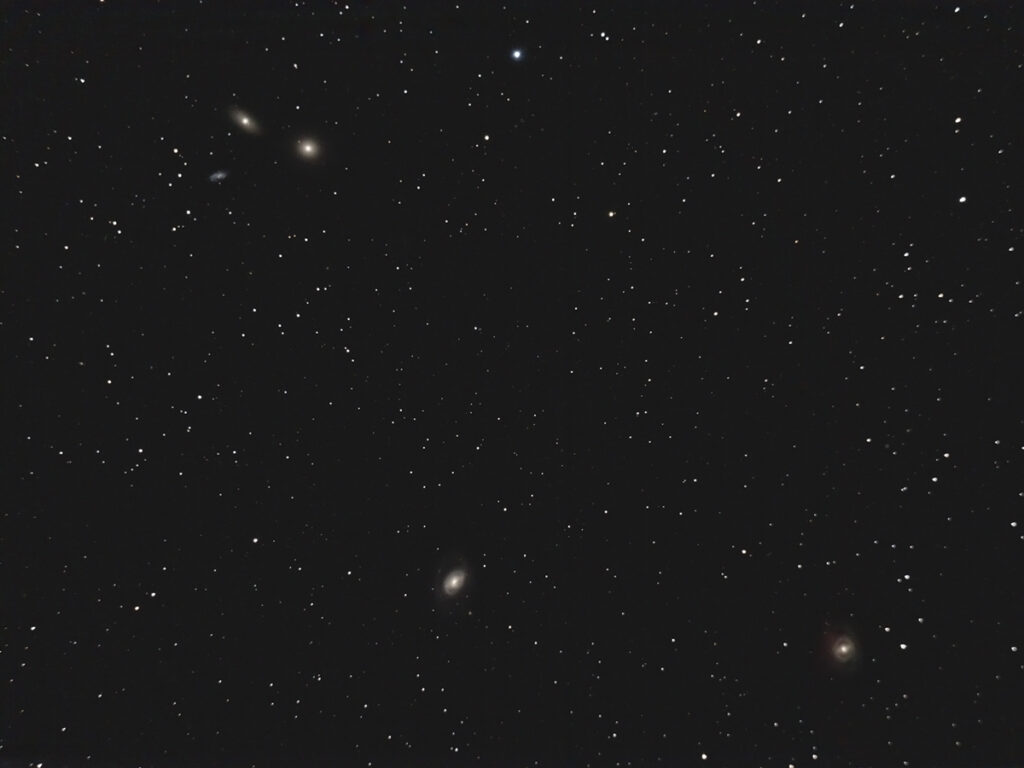
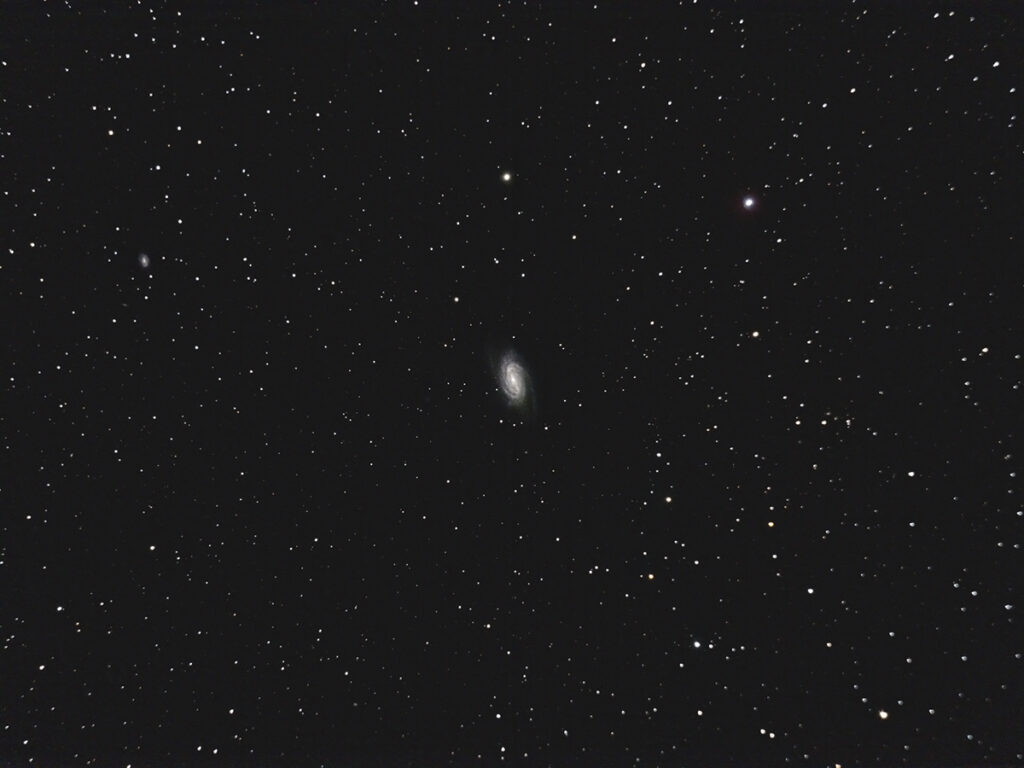
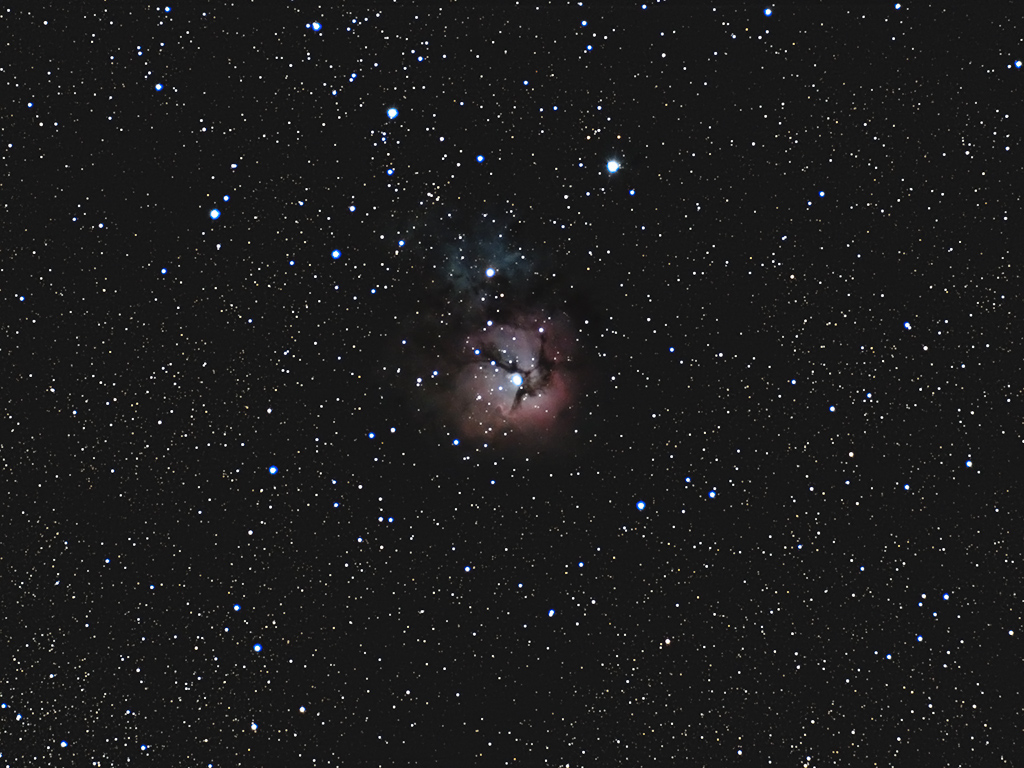
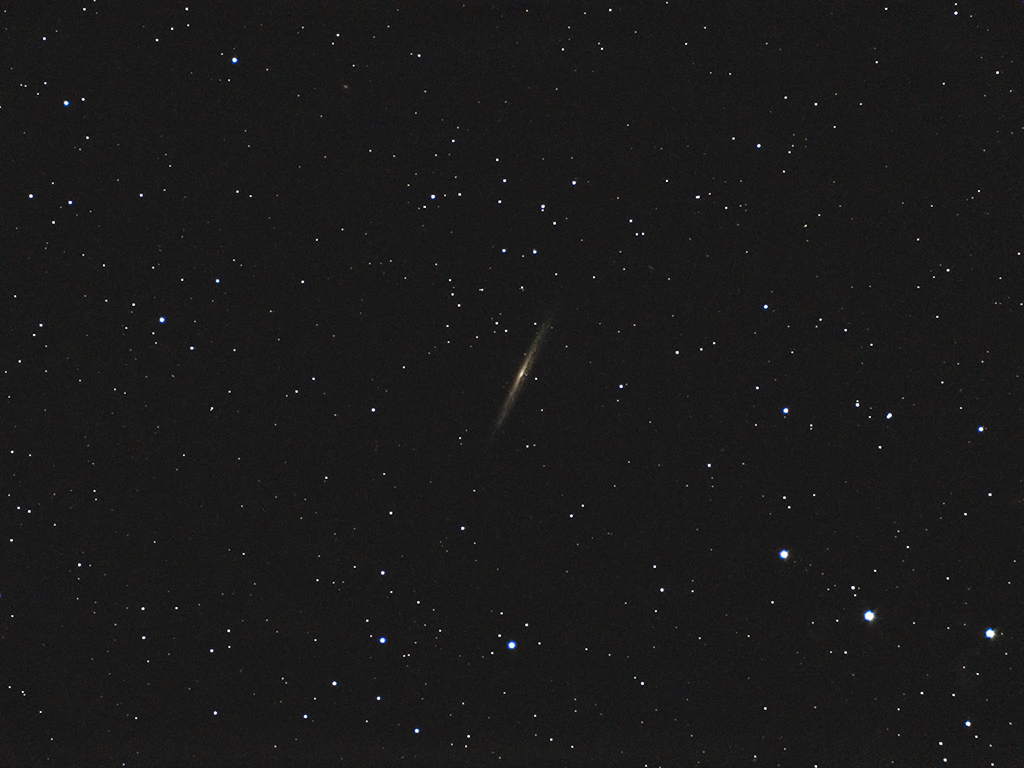
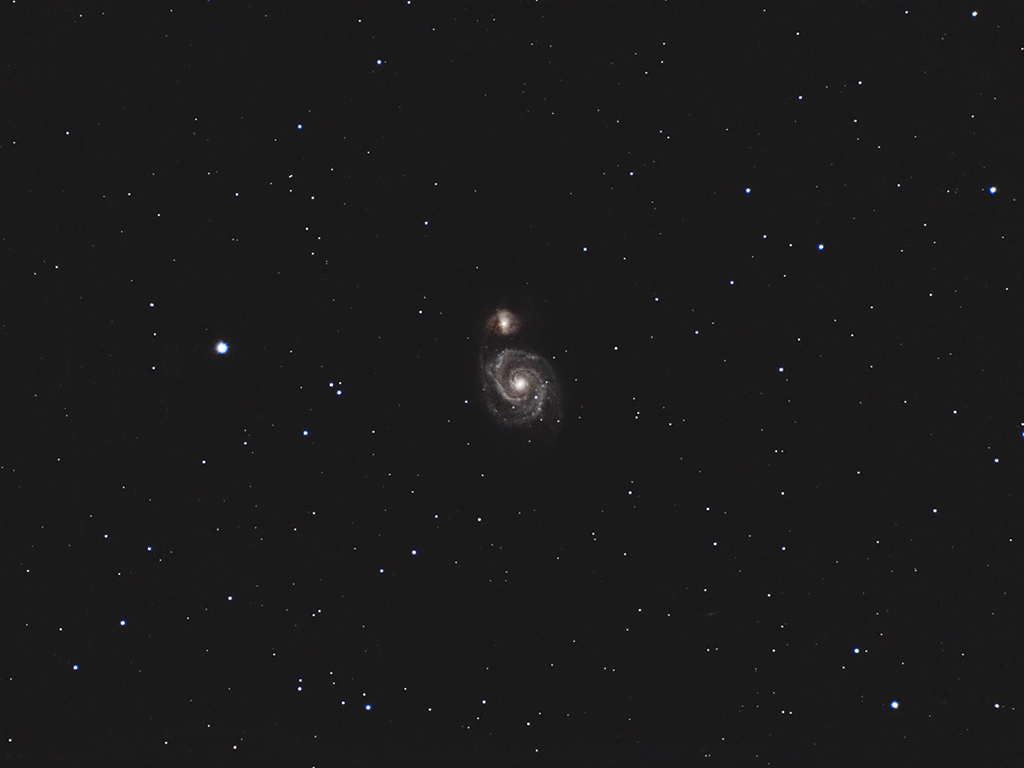
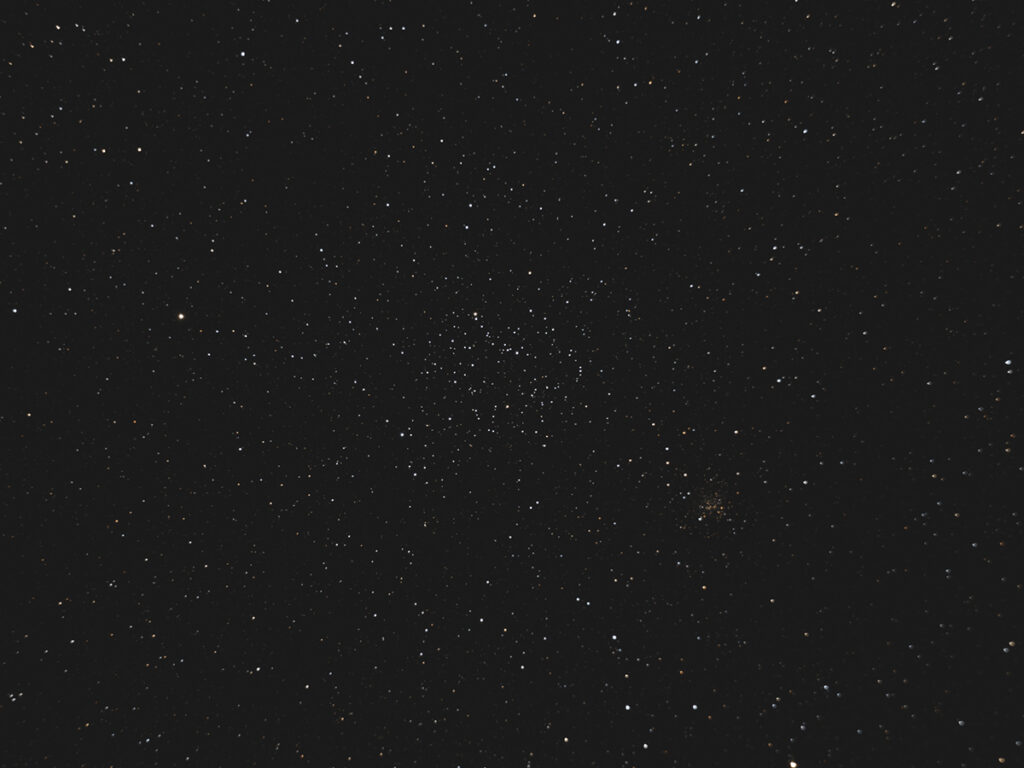
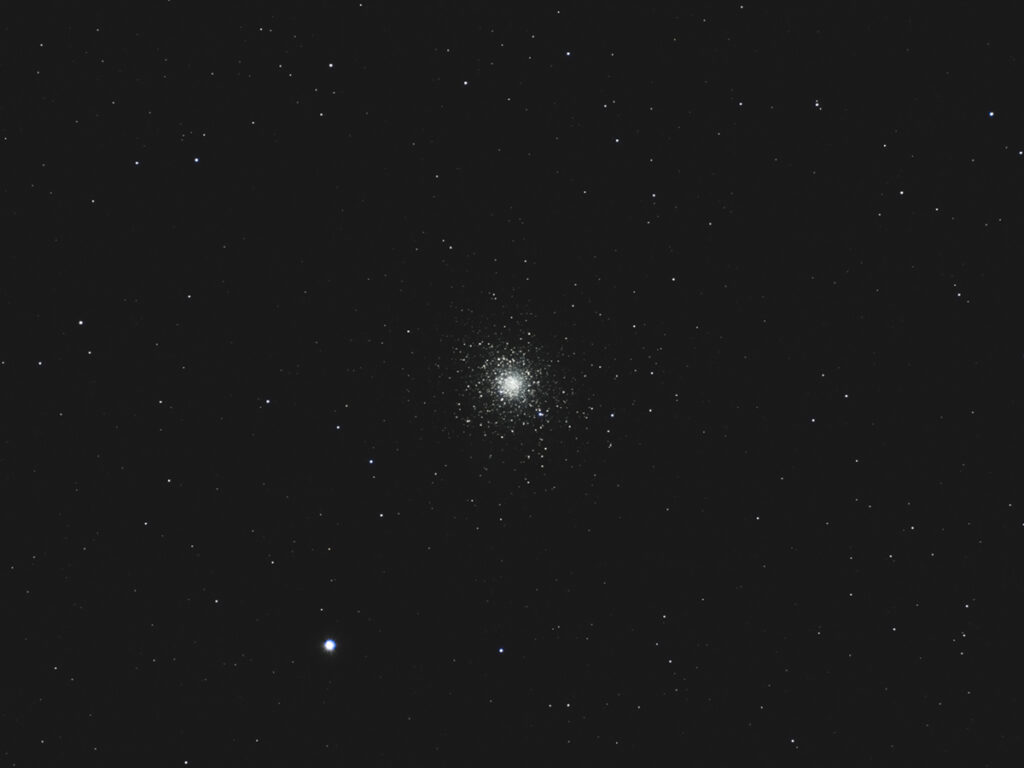
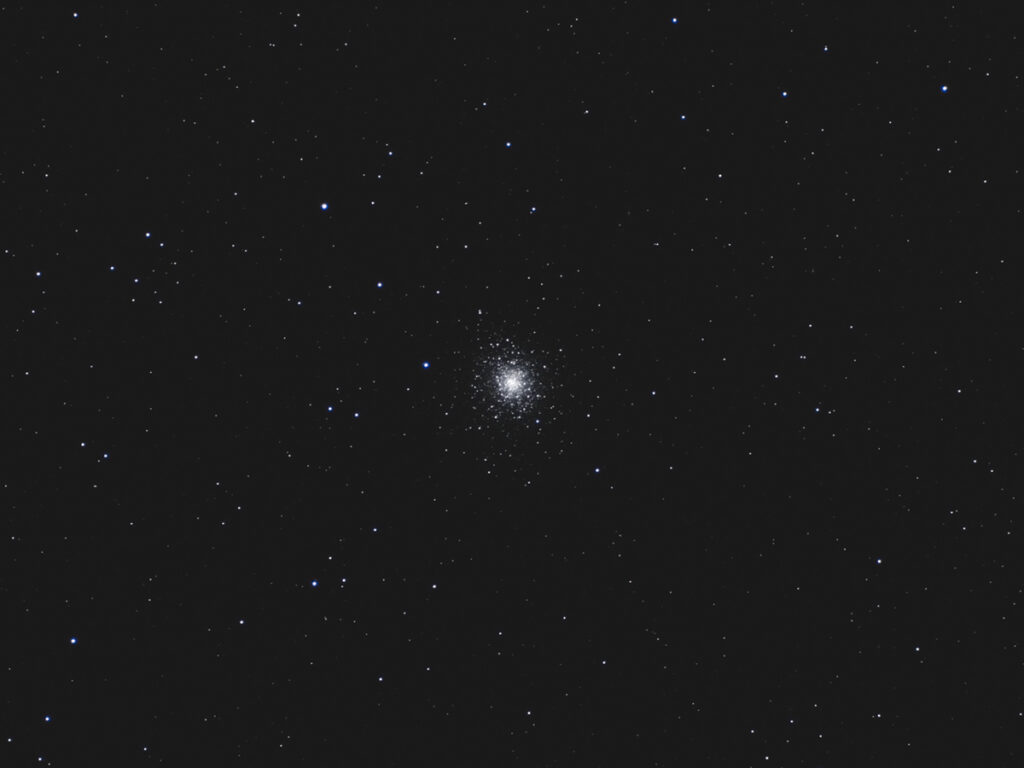
Recent Comments